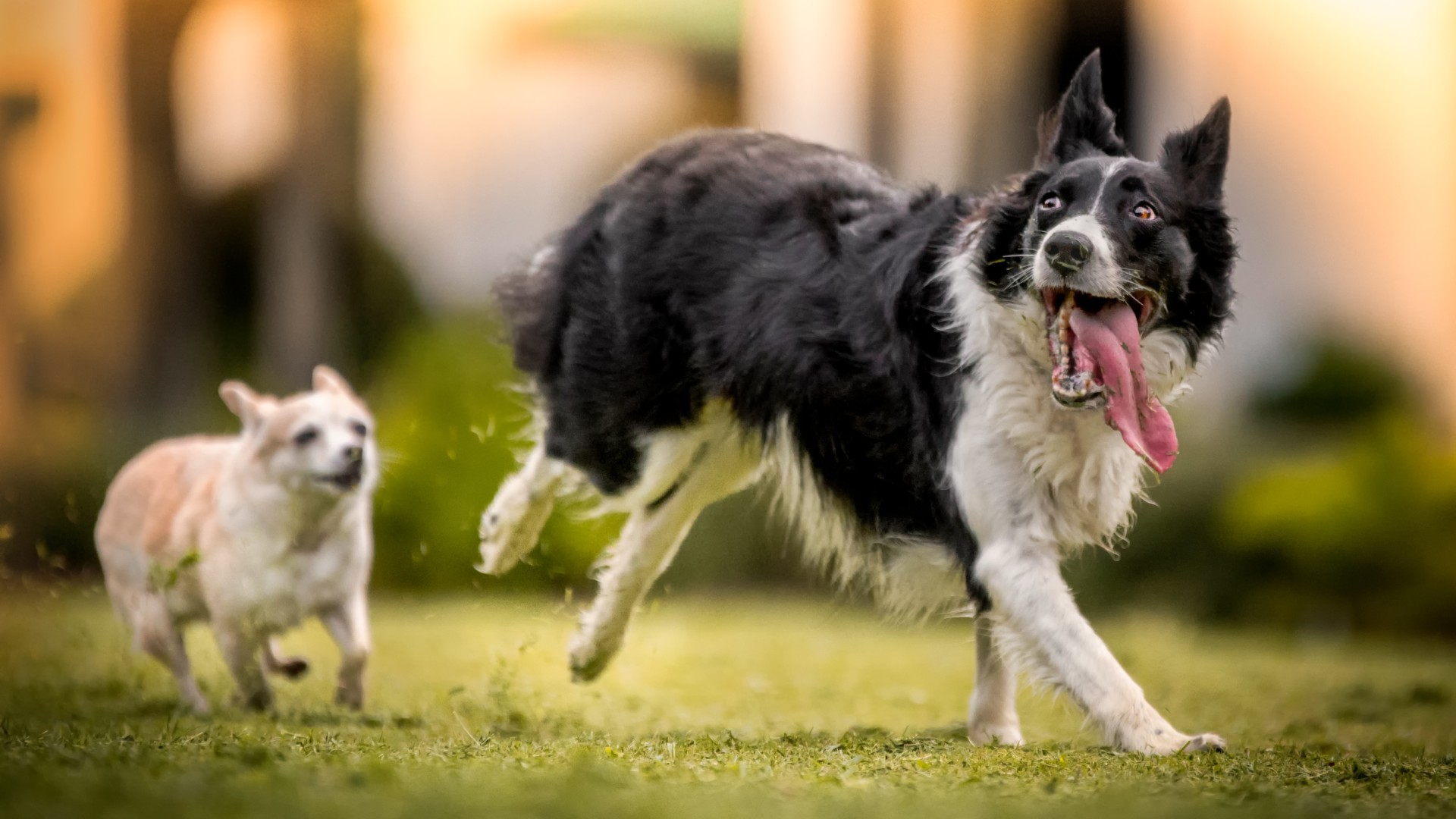How to convert dog years to human years
Find out how to convert dog years to human years to get the most accurate age for your canine companion

Learning how to convert dog years to human years is as easy as multiplying your dog’s age by seven… or is it? While that simple mathematical equation does a great job of highlighting the difference in the aging process between us humans and our canine companions, figuring out old your furkid really is in human years might not be quite that straightforward.
We dig deep to find out where the 7:1 ratio came from, the best way to convert dog years to human years for the most accurate results, and why small breeds have longer lifespans than their larger brothers and sisters.
Does one dog year equal seven human years?
You’ve probably heard that the easiest way to convert dog years to human years is to take your dog’s age and multiply it by 7, but is that method really accurate or is there a better way? It turns out that the 1 dog year to 7 human years theory isn’t backed by science and was instead based on 1950s statistics when humans lived to around 70 years and dogs to 10.
“My guess is it was a marketing ploy,” says William Fortney, a veterinarian at Kansas State University, “a way to educate the public on how fast a dog ages compared to a human, predominantly from a health standpoint. It was a way to encourage owners to bring in their pets at least once a year.”
While people continue to default to the traditional calculation, researchers have come up with a more accurate way of determining just how old your canine companion is compared to you.
A better way to convert dog years to human years

So, why exactly does the 7:1 ratio not work? Because dogs mature more rapidly than humans do in their early years. The first year of a dog’s life sees them undergo such quick development that 12 months is equivalent to 12-15 years of a human’s life!
After that, the American Veterinary Medical Association (AVMA) has some simple guidelines for the remainder of a dog’s lifespan:
Get the best advice, tips and top tech for your beloved Pets
- The second year of a dog’s life is equal to nine human years
- Every year after that roughly equates to five human years
While there are plenty of factors that may influence how precise this measurement is from dog to dog, the AVMA believes this calculation method gives a very good indication of where dogs are in relation to humans.
“Cats and small dogs are generally considered ‘senior’ at seven years old, but we all know they’ve got plenty of life left in them at that age. Larger-breed dogs tend to have shorter lifespans compared to smaller breeds and are often considered senior when they are 5 to 6 years of age,” explains a spokesperson for the AVMA. “The ‘senior’ classification is based on the fact that pets age faster than people, and veterinarians start seeing more age-related problems in these pets.”
To put that in perspective, breeds like the Bernese Mountain Dog and Great Dane, who have an average life expectancy of around 8 years, have already accrued 31 human years by the time they reach the age of 3.
Why do smaller dogs live longer than larger dogs?
With most large mammals in the animal kingdom outliving their smaller peers, scientists have yet to pinpoint why the reverse is true when it comes to dogs. While the area requires further research, a study conducted by Cornelia Kraus, an evolutionary biologist at the University of Göttingen in Germany, has provided some answers into why petite breeds like the Chorkie, outlive larger breeds like the Cane Corso.
In a large-scale study involving more than 50,000 dogs across 75 breeds, Kraus and her team sought to distinguish between two hypotheses: that large dogs die earlier because they age faster or that they start aging earlier and therefore develop health issues sooner than their smaller peers. They also added in a third hypothesis – that large breeds might simply have a higher baseline mortality rate than smaller breeds.
When Kraus graphed the data, there was a strong correlation with the faster-aging hypothesis that sees large breeds age in fast motion. Other studies have also shown that smaller dogs have lower levels of the growth hormone IGF-1, which slows the rate of aging and reduces the risk of illness.

Kathryn is a freelance writer who has been a member of the PetsRadar family since it launched in 2020. Highly experienced in her field, she's driven by a desire to provide pet parents with accurate, timely, and informative content that enables them to provide their fur friends with everything they need to thrive.
Kathryn works closely with vets and trainers to ensure all articles offer the most up-to-date information across a range of pet-related fields, from insights into health and behavior issues to tips on products and training.
When she’s not busy crafting the perfect sentence for her features, buying guides and news pieces, she can be found hanging out with her family (which includes one super sassy cat and a kitten), drinking copious amounts of Jasmine tea and reading all the books.
She has written for a range of publications, including Fit&Well, Top Ten Reviews, LiveScience, Goodto, and Product Hunt.
